Project 5- Waiting for Godot
In the winter of 2019 Frank Bradley and I had been planning on presenting the play The Curious Incident of the Dog in the Night. However, because of the revival in London we were denied the rights during the first week of the semester. The draftings had already been submitted to the shop and several days of work had begun. Fortunately, we knew this might be a possibility and already had a backup in mind. Once we got word that we were denied the rights for Curious Incident… we had a week of intense planning to develop our ideas for Waiting for Godot by Samuel Beckett. Mr. Beckett was an acquaintance of mine from many years ago and the director and I were familiar with the play and Beckett’s style. The play was to be set in the Malak Gabr which has a very large stage. We wanted to make the best use of that to create a wide open stage with a small “island” in the middle for the majority of the action to take place. We wanted to emphasize both the size of the space and the verticality. I had always been drawn to the idea of ritual in Beckett plays and how that related to child’s games (the metaphor of human existence). The original thought was to have a small sandbox as the central island framed by the required tree and four large panels. The panels were intended to evoke remnants of a large manmade structure that was long abandoned, as well as creating the sense of verticality. Cutting across the floor with the sandbox in the middle was a painted path that created a sense of direction from upstage right to downstage left. I presented the director with the preliminary ideas (https://www.youtube.com/watch?v=ofgMwdzLhGU) and they were accepted. Work began immediately on the simple sandbox, panels and foam sculpted tree.
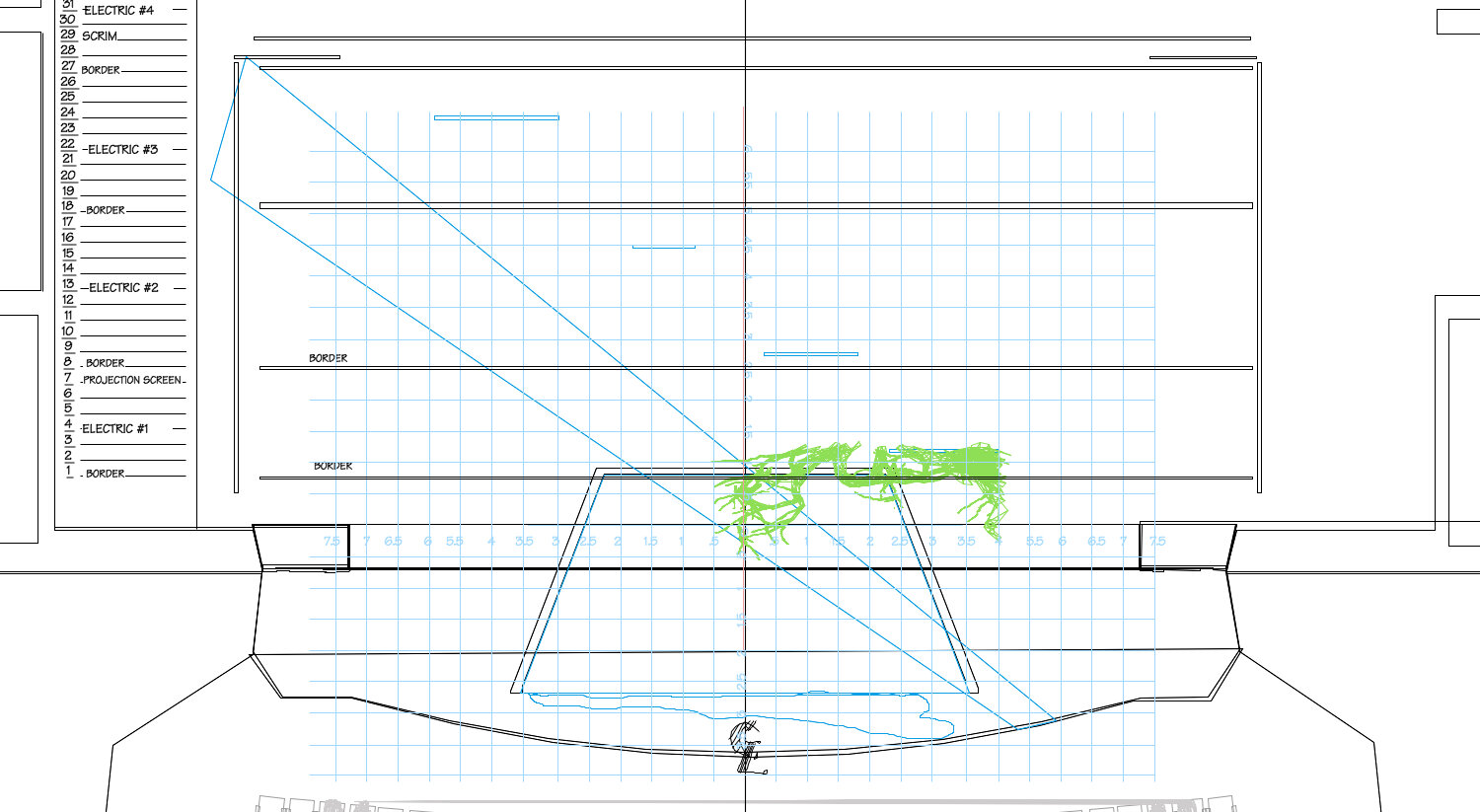
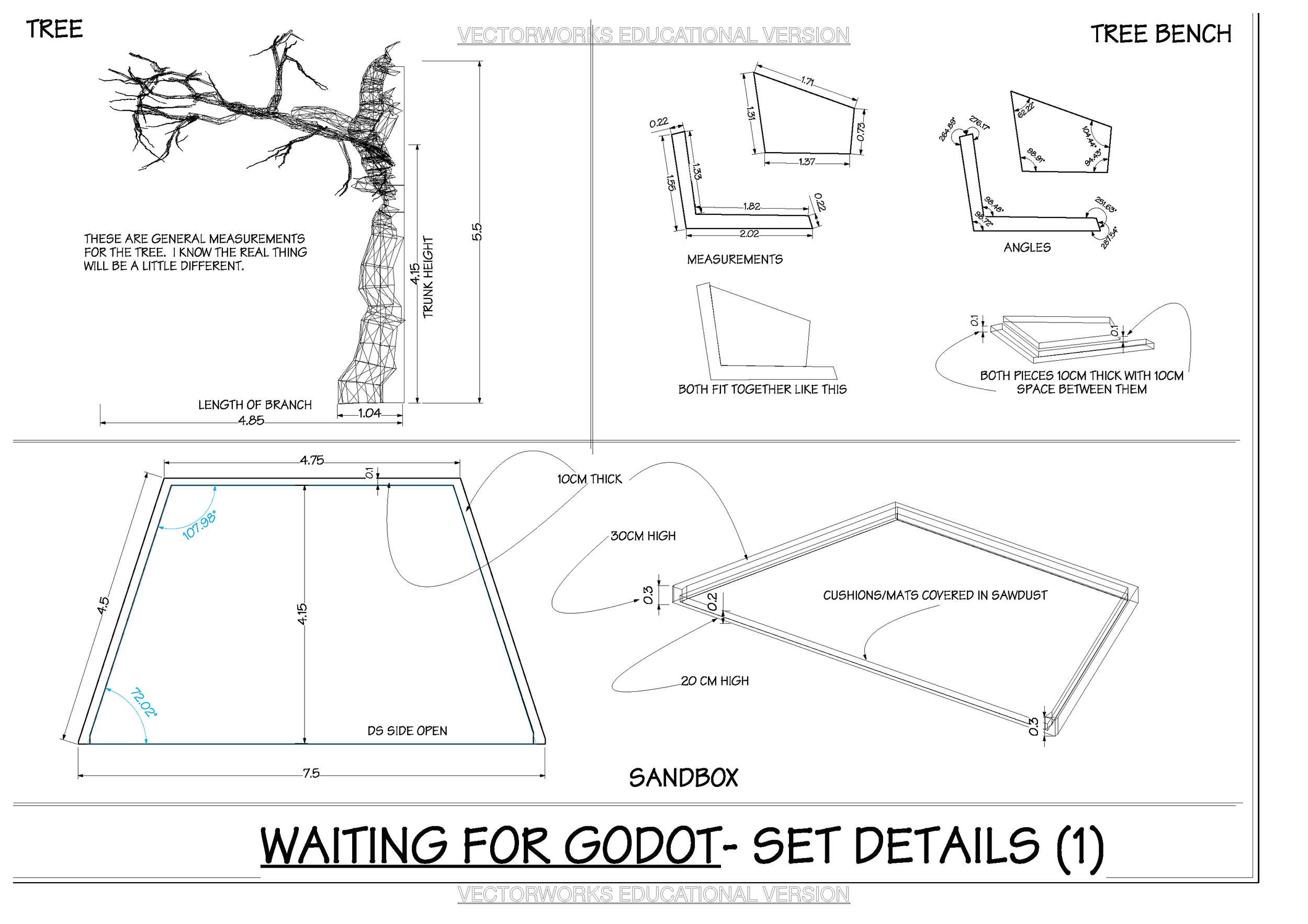
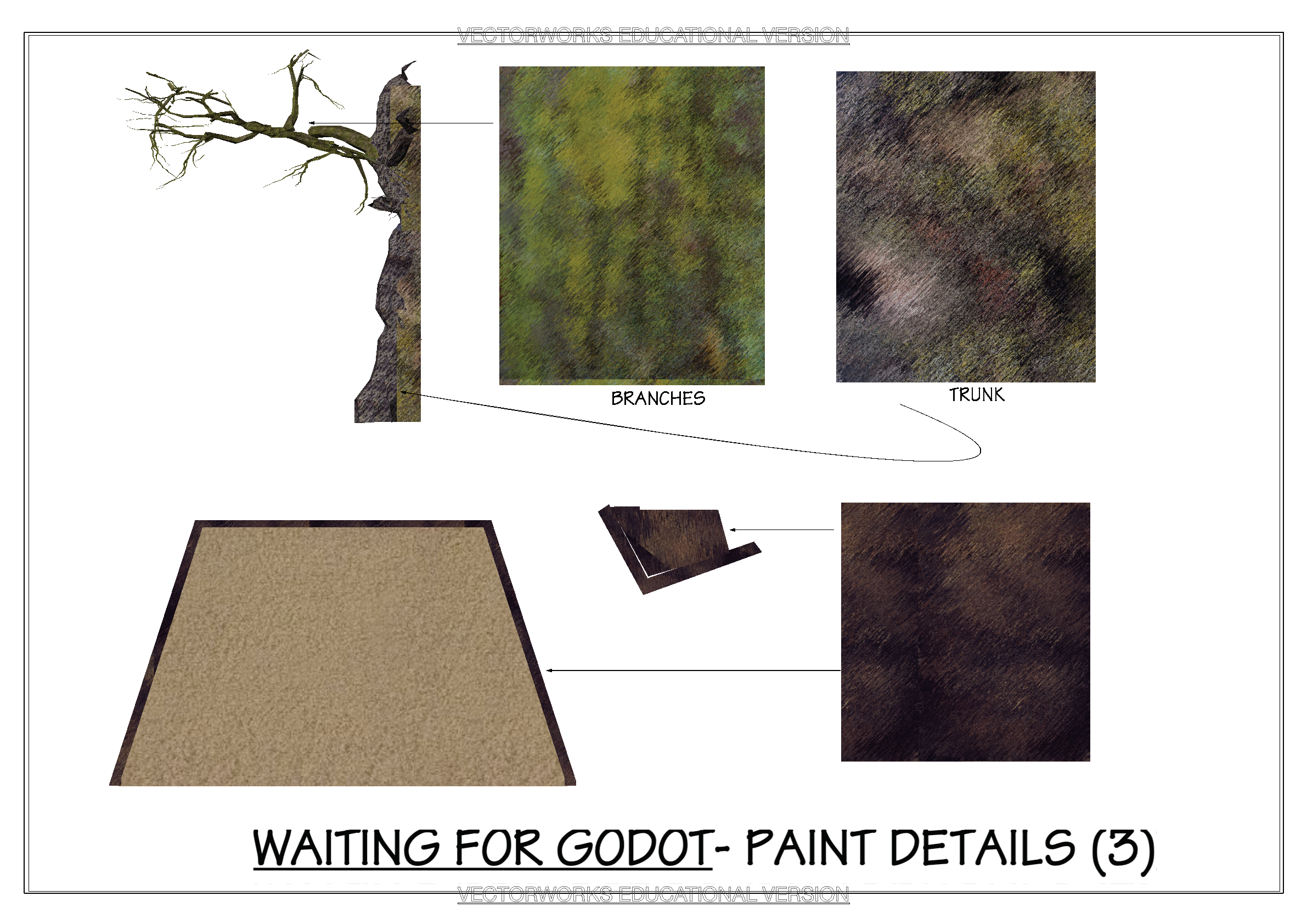
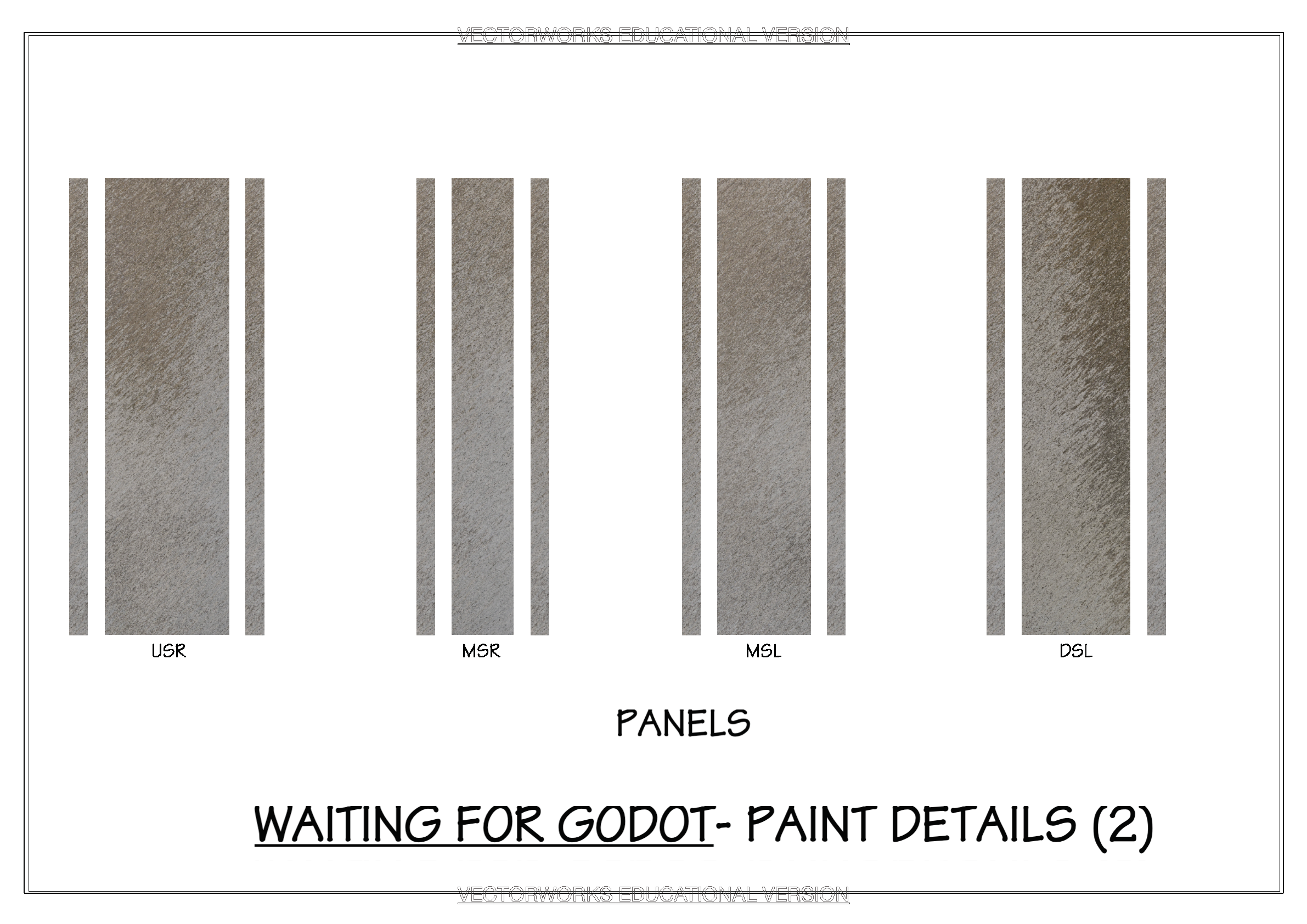
The lighting design ideas for Godot were different than how the director and I had worked previously. Our idea was to create a neutal playing area and shift the tonalities and shadows subtly with a system of LED lights. The audience’s conscious perception would remain the same, but the changes would hopefully occur on a subconscious level. I created a lighting strategies presentation of what I refer to the “toys” of the design that the director and I would then play with (https://www.youtube.com/watch?v=JThXnb01Rd8). This concept goes back to something I read at the very beginning of my career about the American director Peter Seller’s approach to how he works with designers. The concept has stayed with me ever since. But unlike other productions, by prior planning could only be done with these larger blocks of lighting systems. The main flow, progression and cueing could only happen during rehearsals with the actors and the musicality of Beckett’s words being spoken aloud. The director approved of this approach and we moved forward with the lighting hang and focus.
Waiting for Godot- Light plot
Waiting for Godot- Light plot
The third element that was discussed was projections. I presented the director with the idea of moving clouds projected onto the four vertical panels that would move so slowly as to be barely percepable. These clouds would then offset the cyc which would color the negative space in between the panels. There clouds would continue through the majority of Acts 1 and two until the projected moon, mentioned in the script, appears in a quick shift to night. In our world of Godot night falls in an instant and the moon is much larger than life. See video excerpts below.
Technical rehearsals were approached differently. We allowed the actors to run longer sections while the director and I listened and decided what the color nuance should be. Then we would go back and run the section again to see if the several minute long cues were appropriate. These prolonged lighting cues, coupled with the subtlety of the slow moving projected clouds, created a dreamlike world for the characters to exist within. The play was double cast and at first we were concerned about the different pacing of the two sets of Didis and Gogos. However, their interpretations were similar enough that it never became an issue. The slight variations of the two casts created a nice variance within the dreamlike frame.
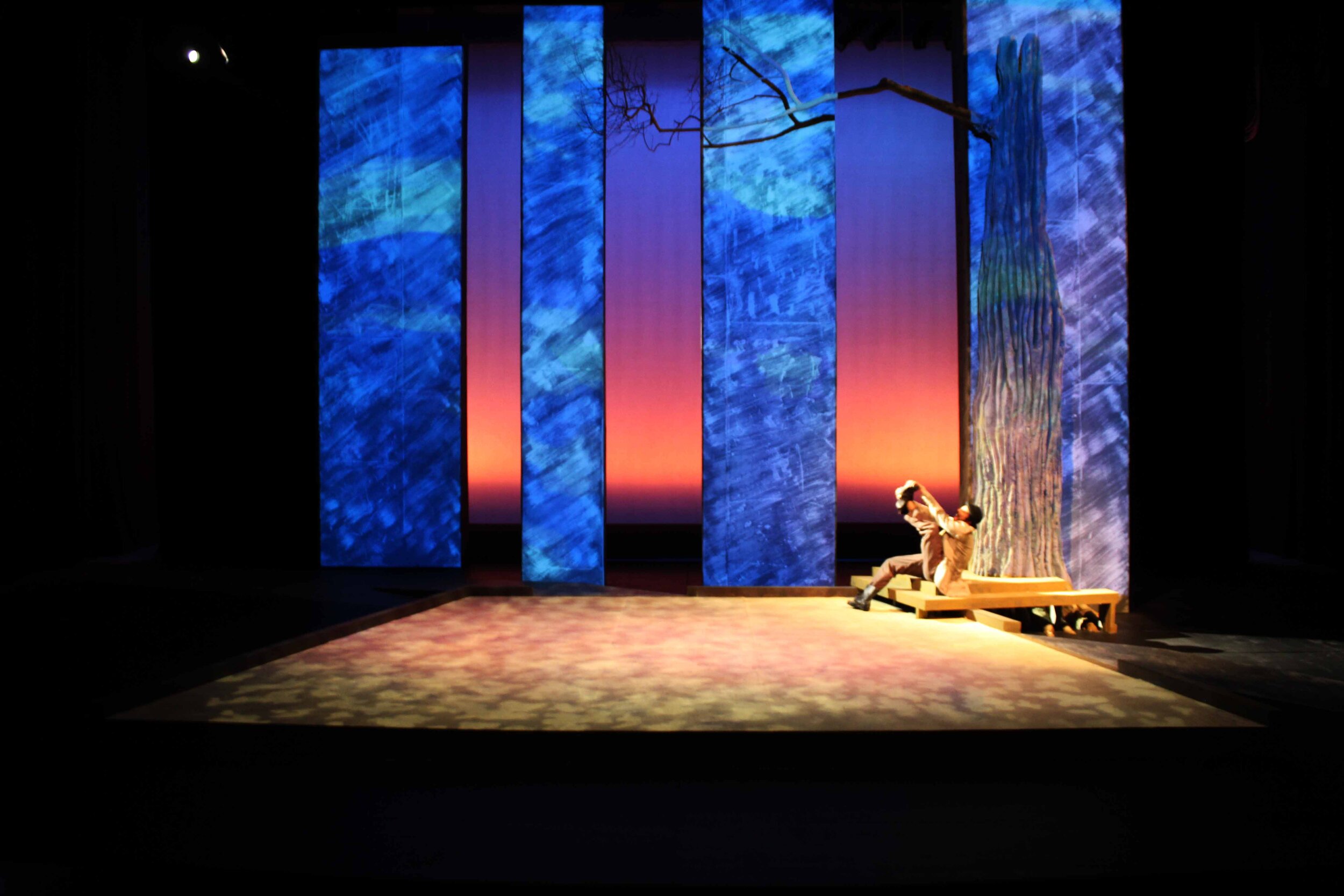
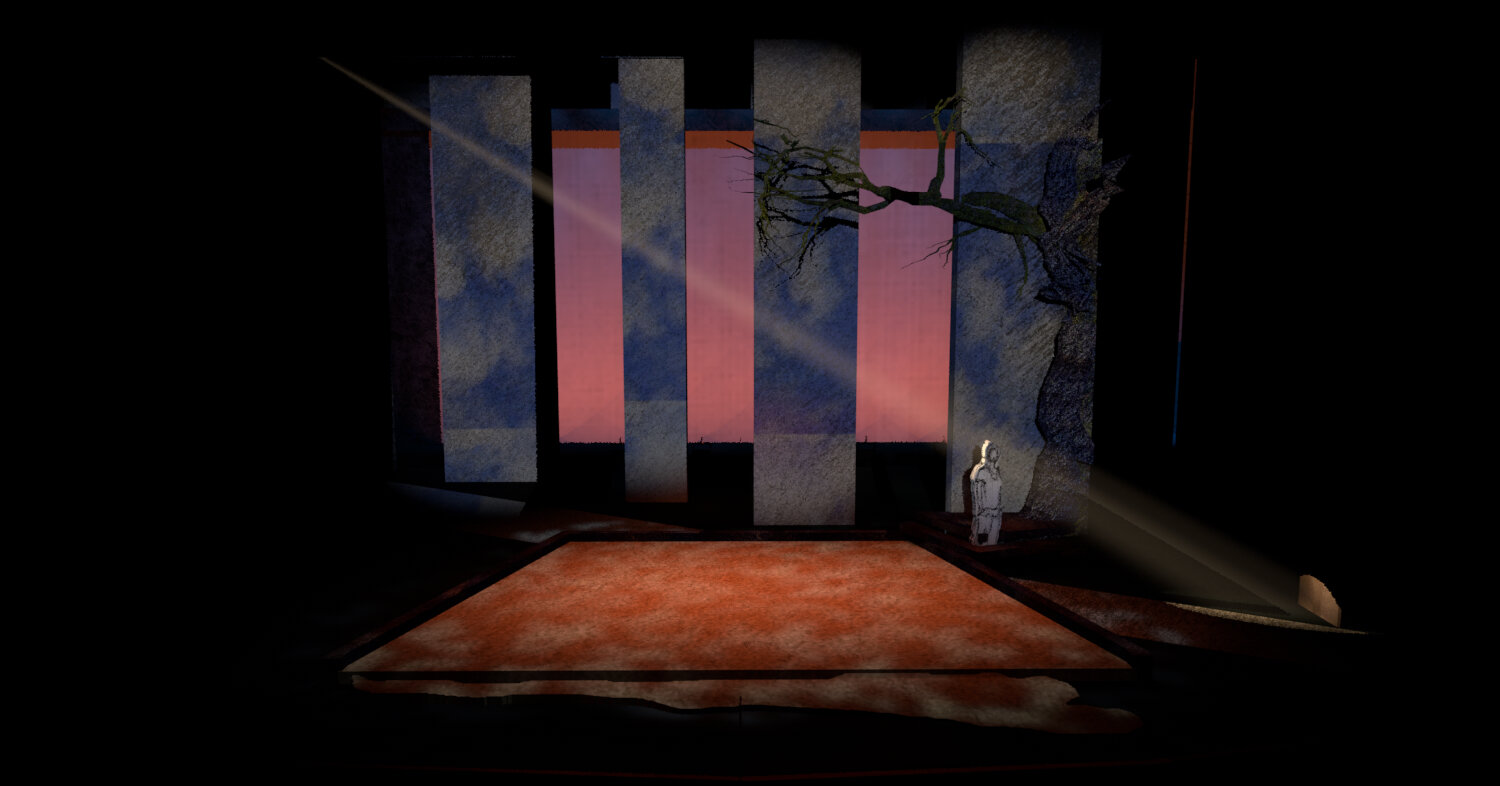
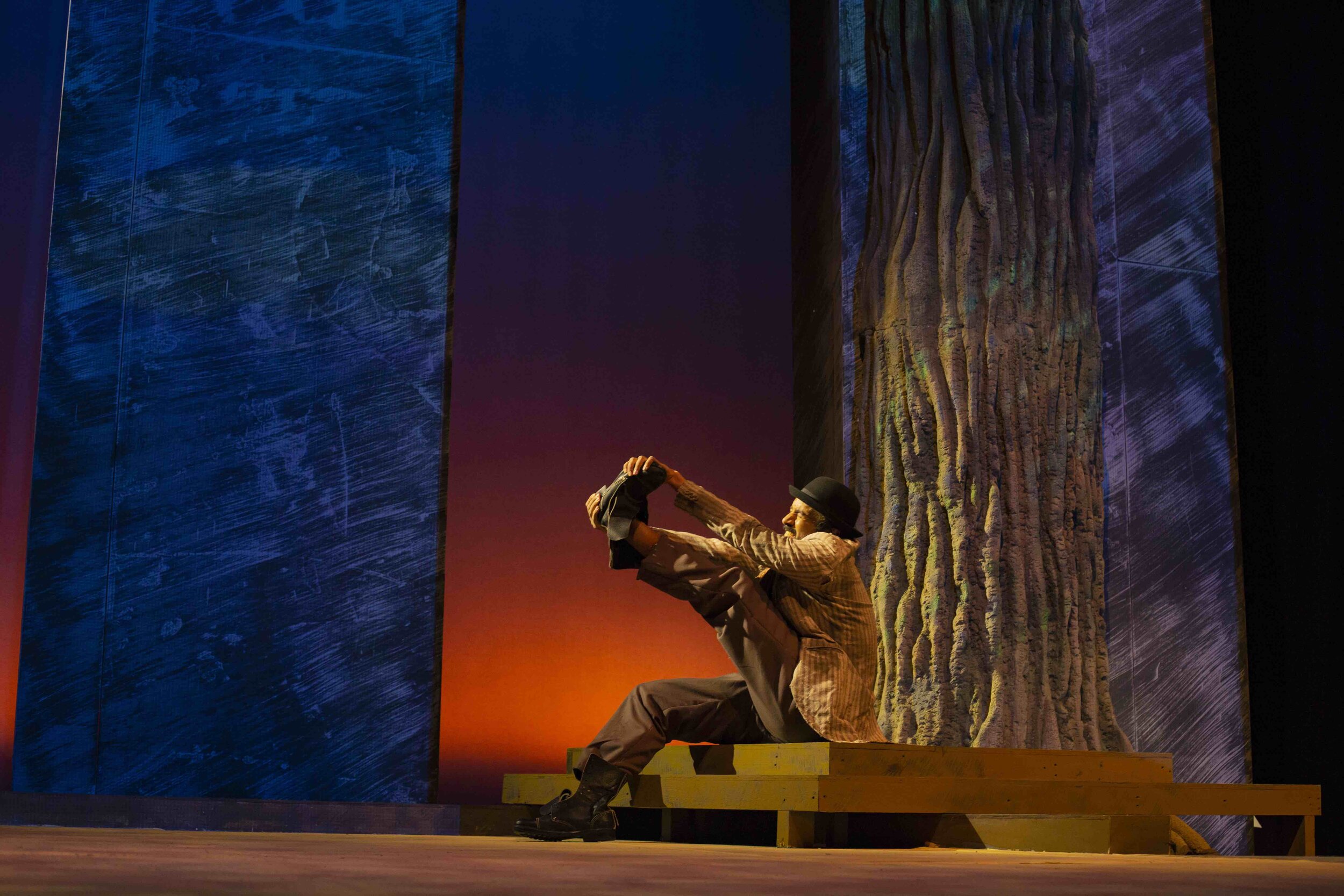
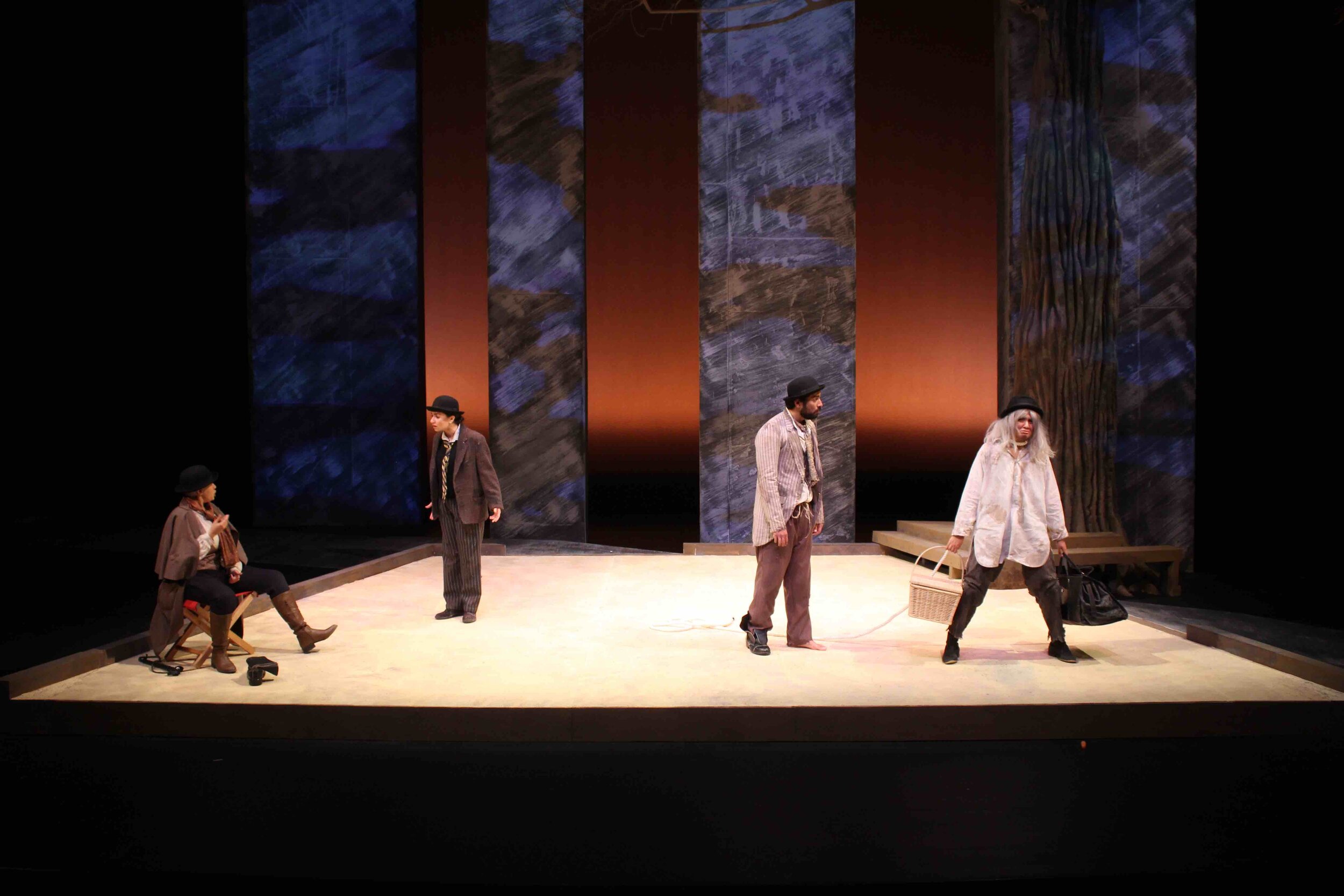
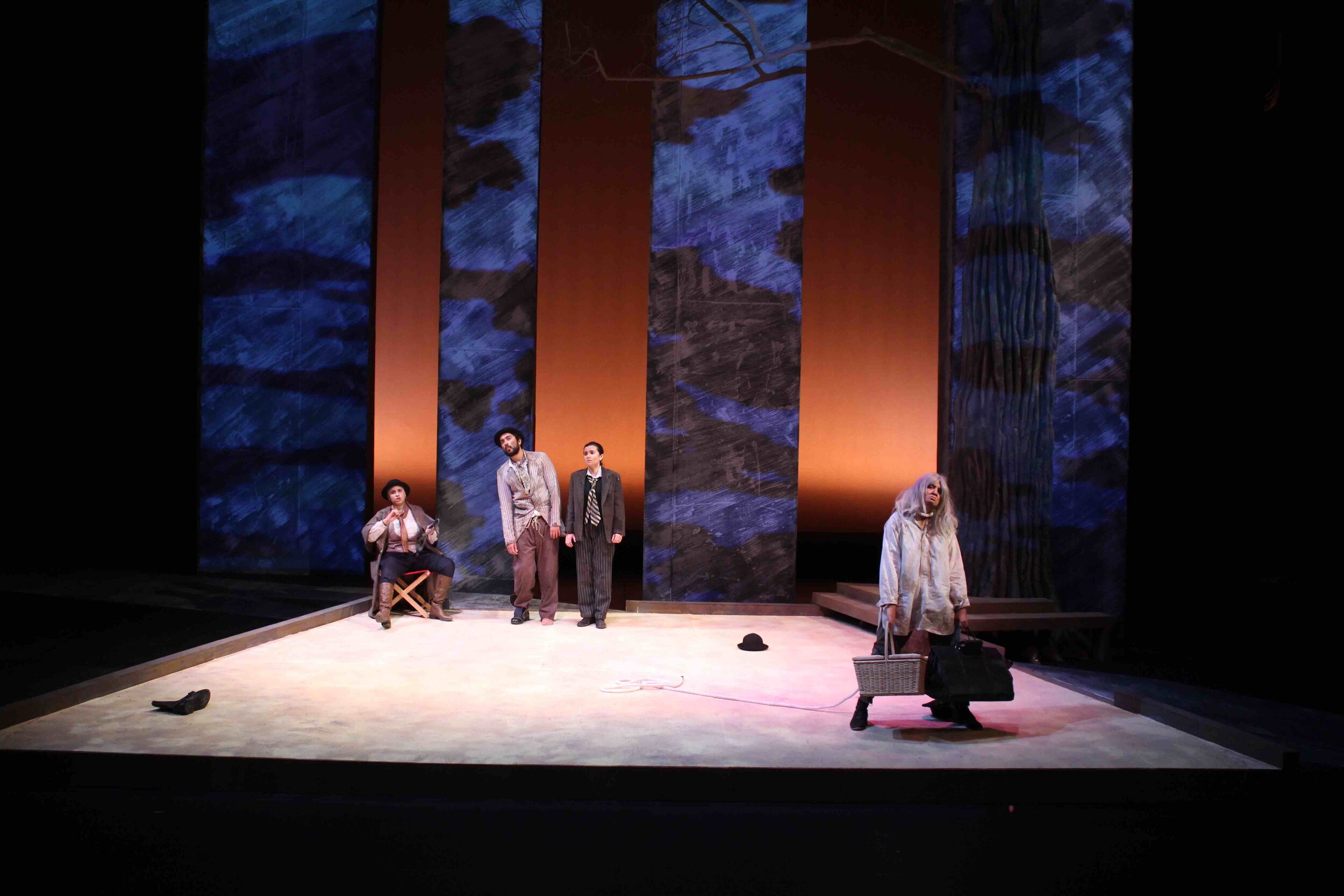
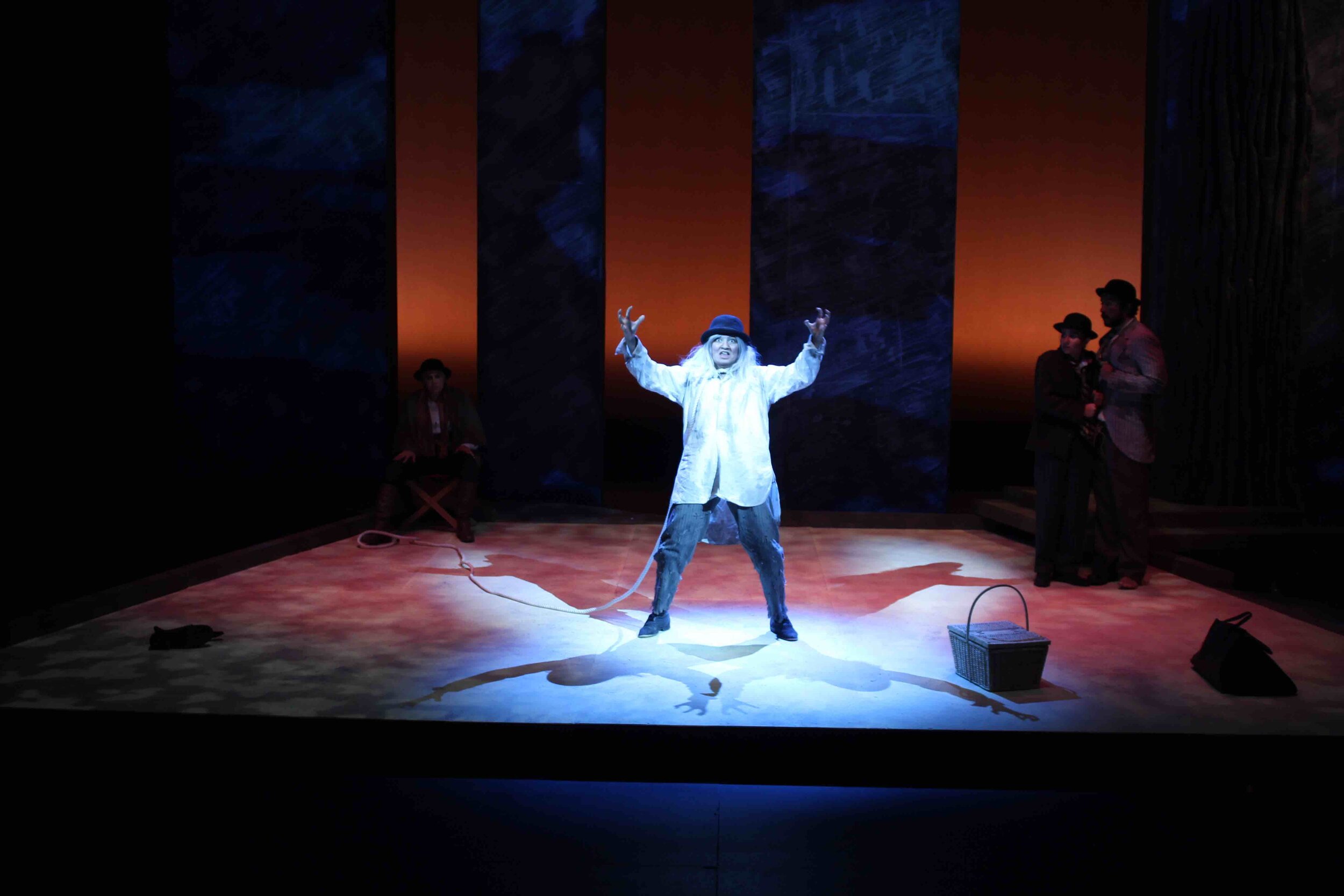
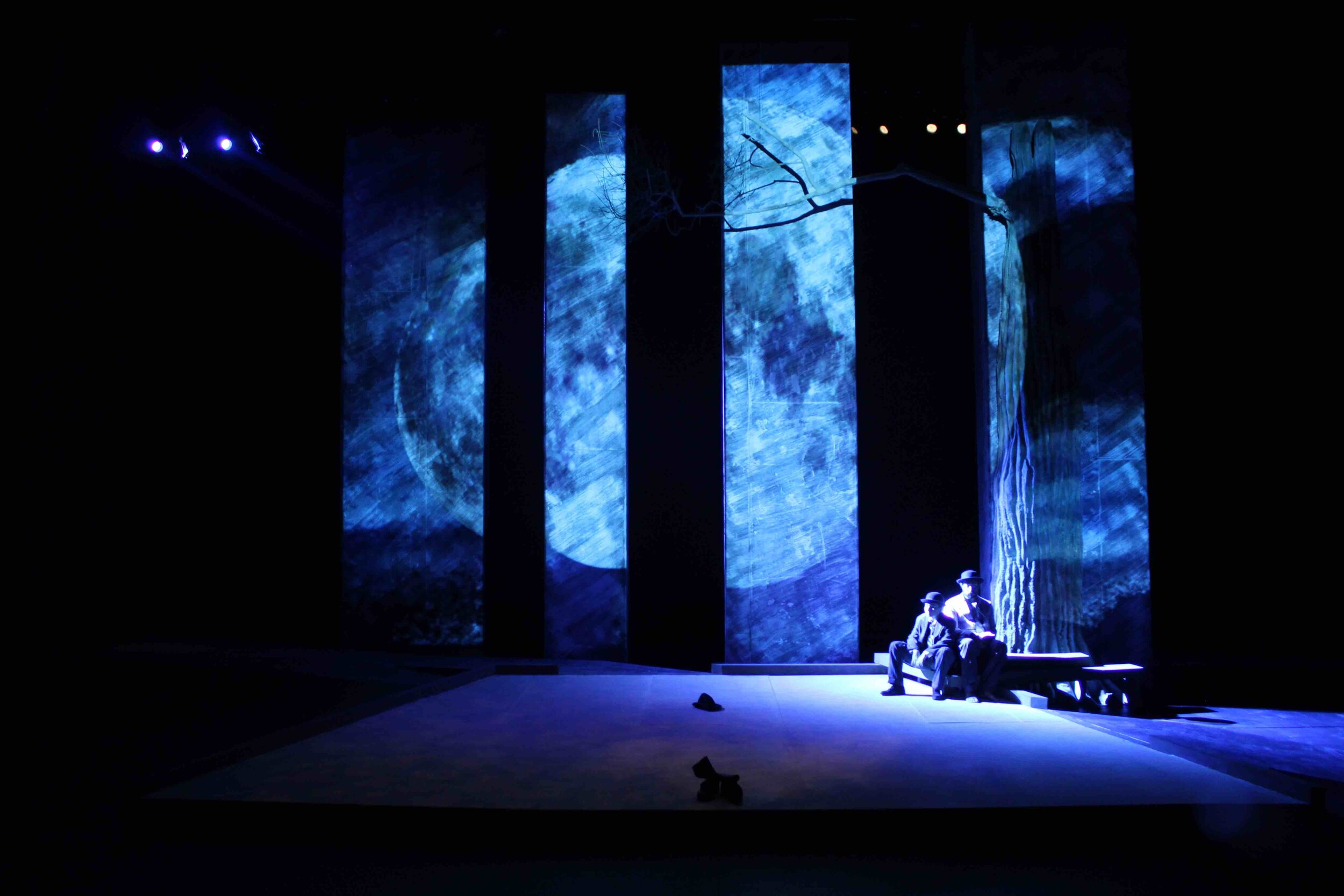
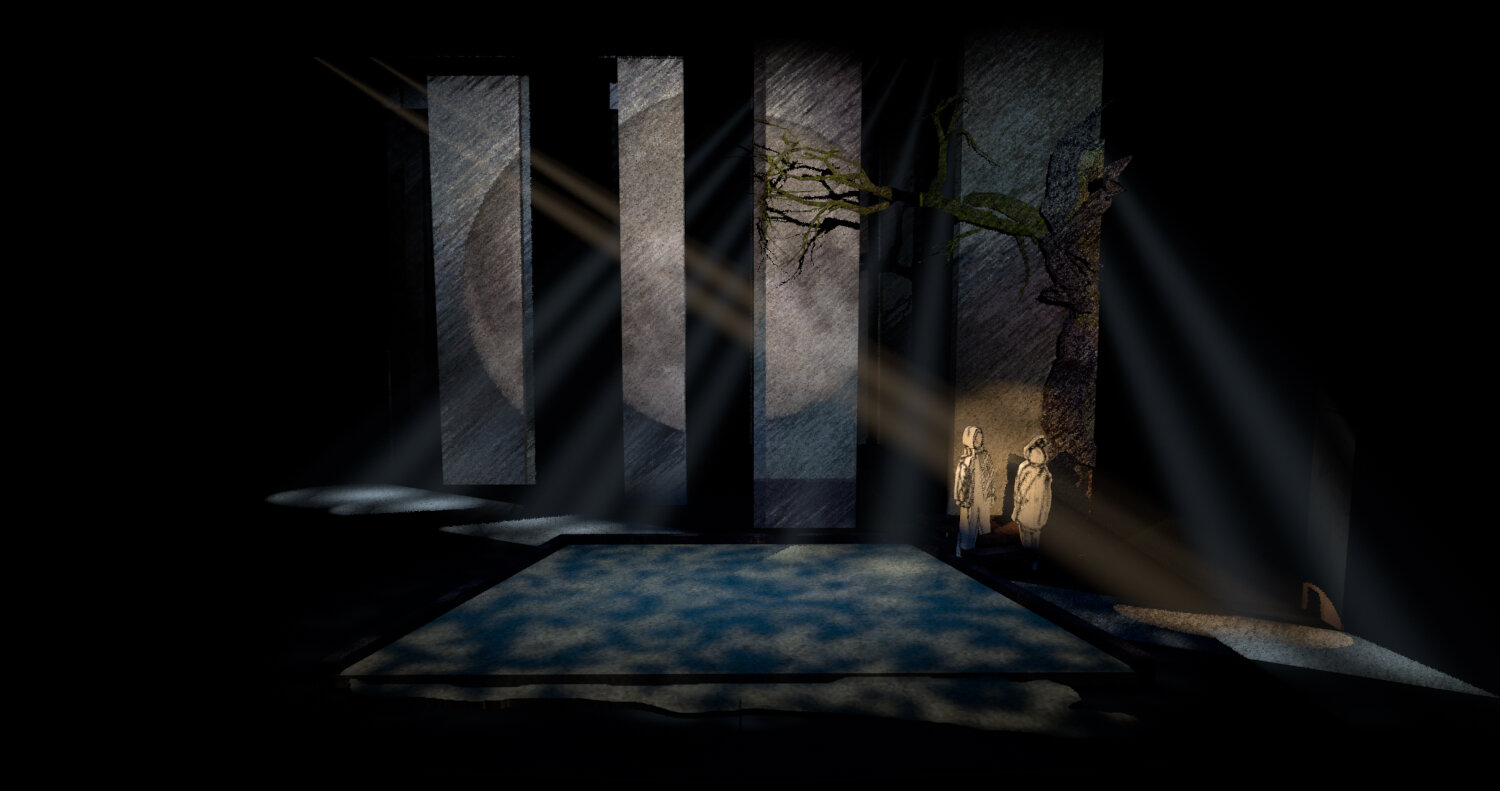
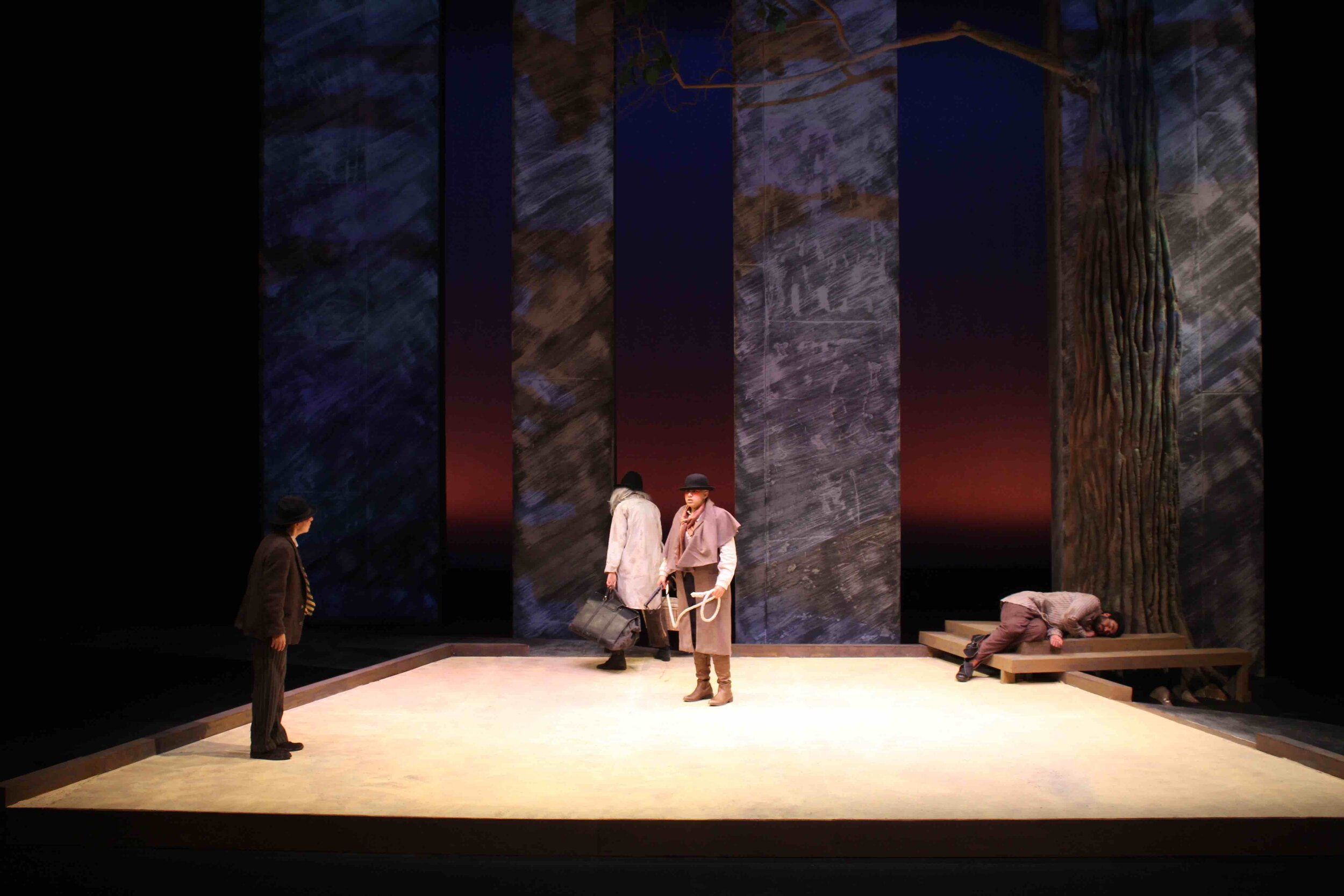
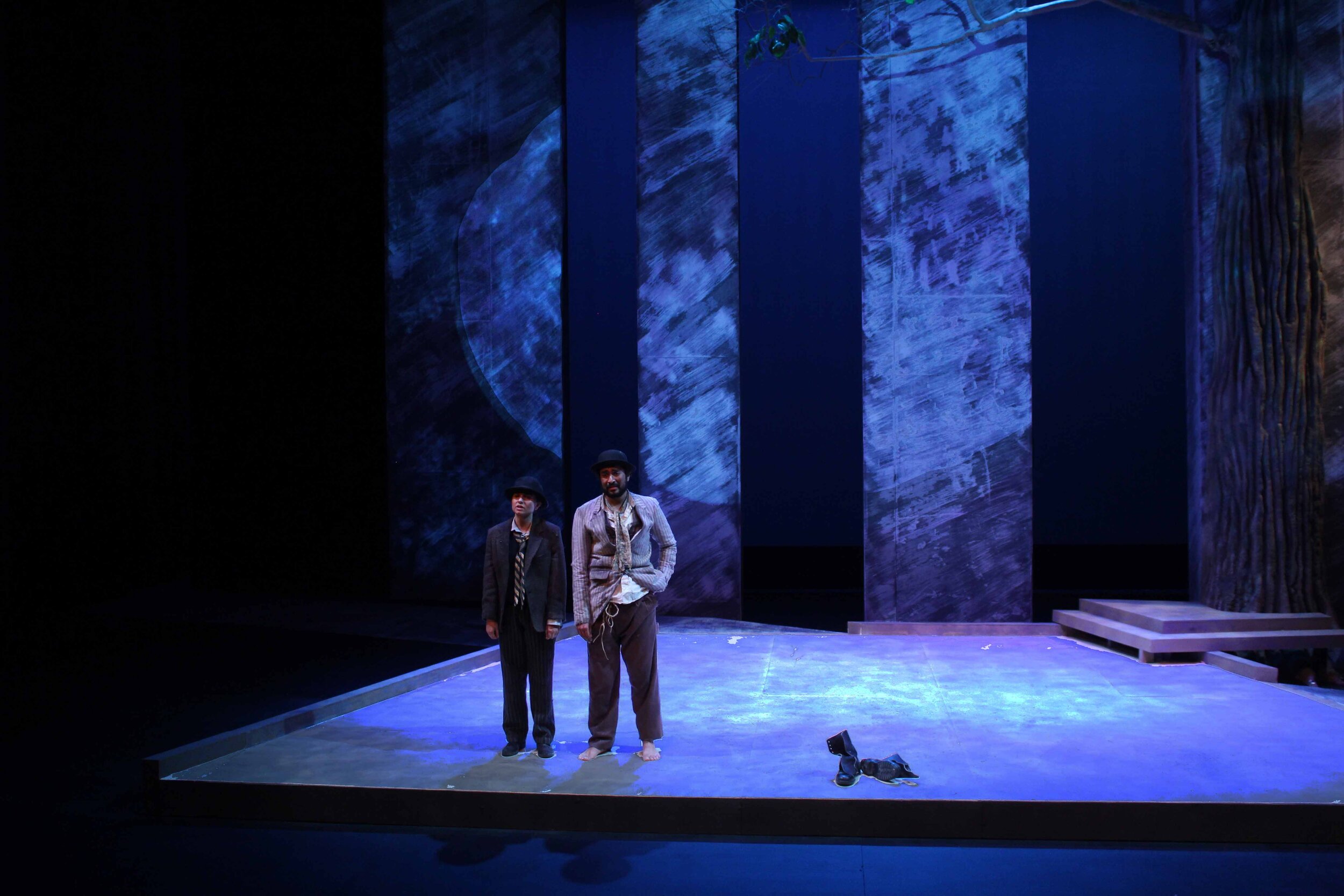

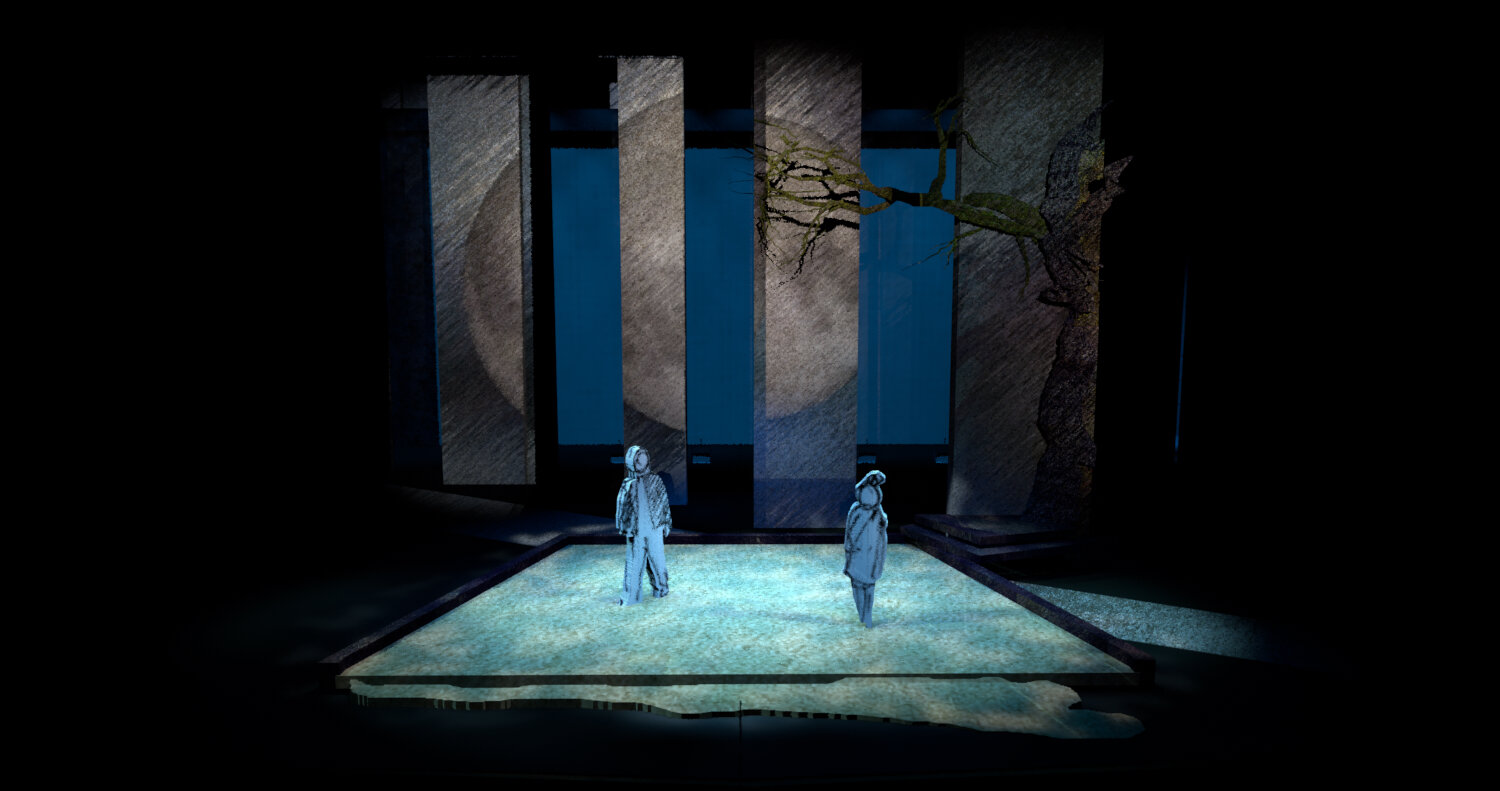
Not as evident in these images are the projections. Their visual language was fairly simple. For the majority of Acts 1 and 2 a set of slowly moving clouds went across all four vertical panels at a spped that was barely perceptible. The negative space of the clouds was also part of what could be colored with light to show emotional changes. The end of both acts was a transition from the slow moving clouds to a moon rise, as is pictured in the image above. Act 1 was a slow transition to the moon and then a quick fade out at the end of the act. Act 2 was a quick transition from day to night, and then as the pace of the dialogue slowed during the last few lines, an added layer of shimmering stars appeared briefly just as the whole stage fades to black. Below is a video showing these moments.
Waiting for Godot- video excerpts

